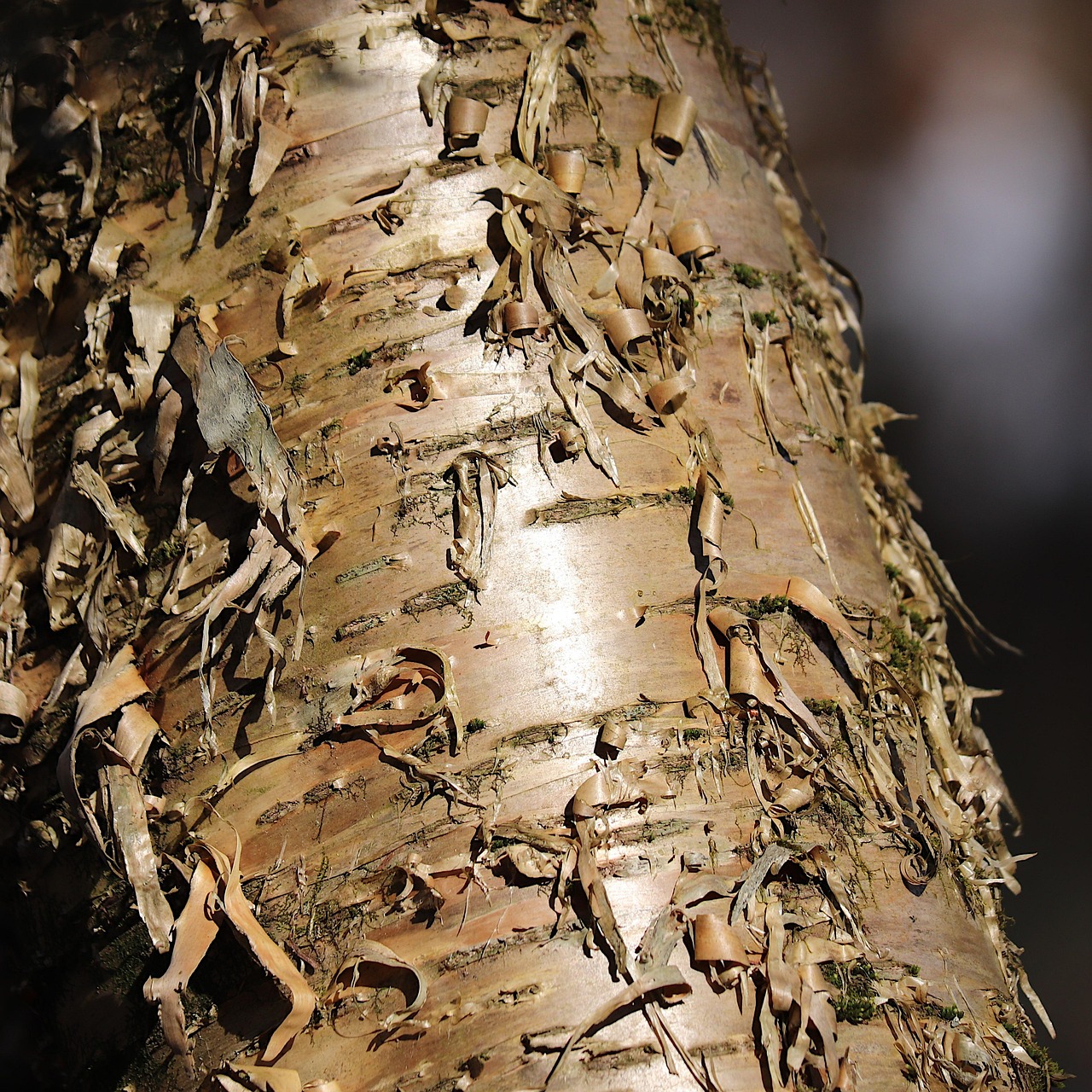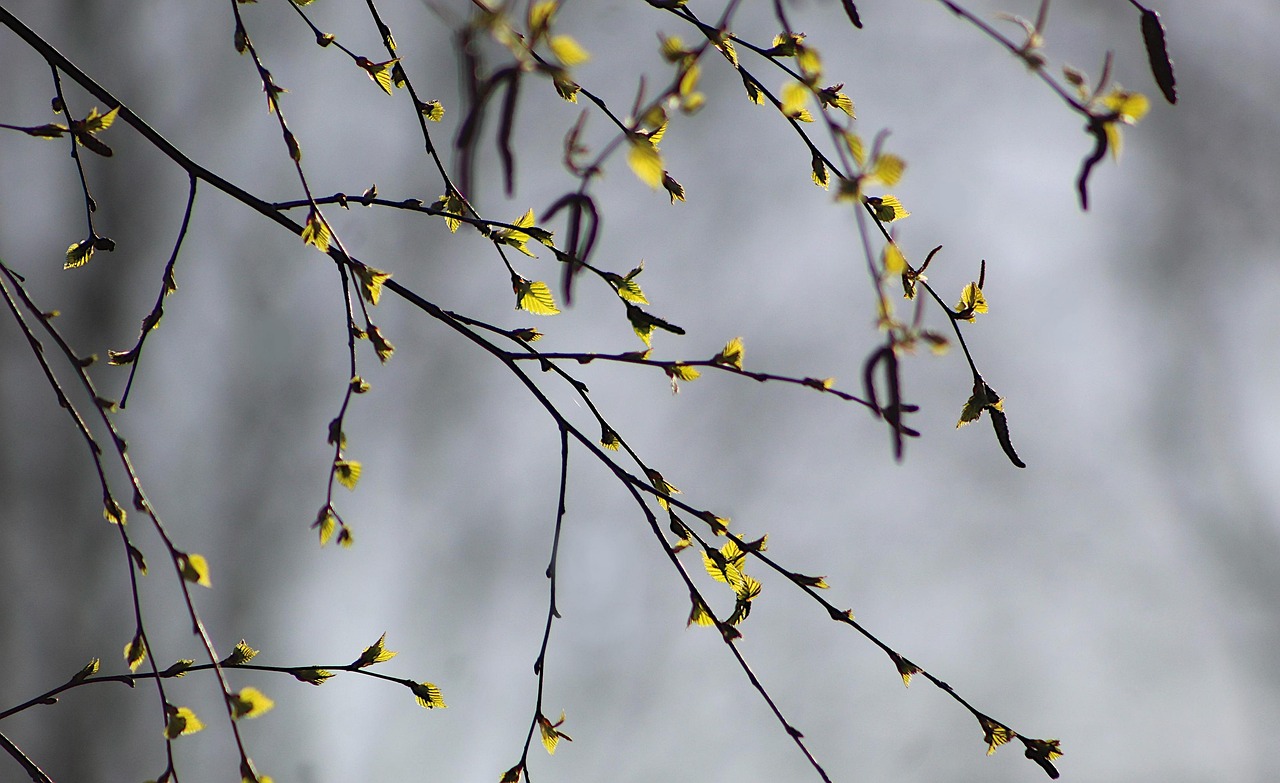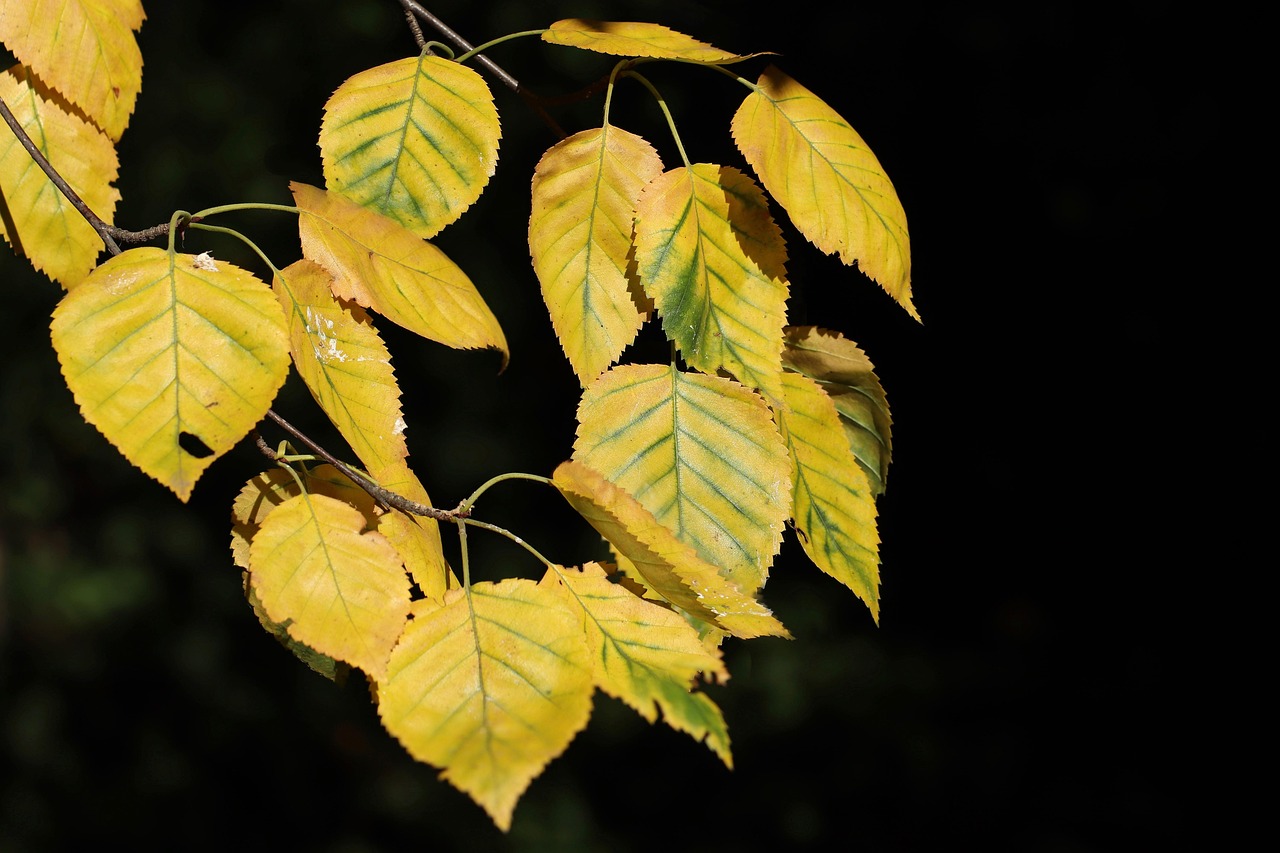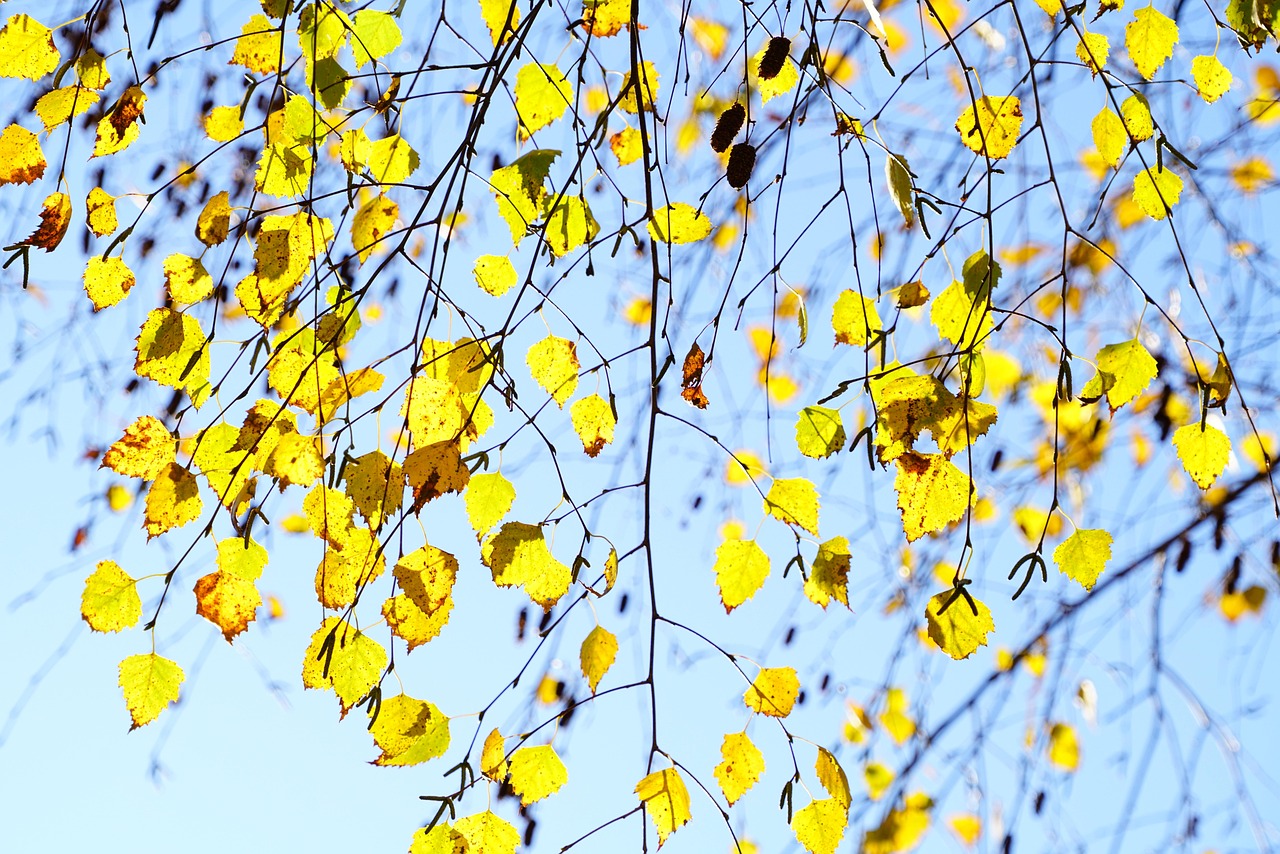The Yellow Birch tree, known scientifically as Betula alleghaniensis, exhibits a moderate growth rate, typically ranging from 12 to 24 inches per year under optimal conditions. Its growth dynamics significantly influence woodland ecosystems, contributing to biodiversity and soil health.
Understanding Yellow Birch Growth Rate
The Yellow Birch tree is a native species found primarily in the northeastern United States and Canada. It thrives in mixed hardwood forests and is well adapted to the cooler, moist environments of these regions. This tree species plays an essential role in its ecosystem, supporting various wildlife and contributing to the overall health of woodlands.

Yellow Birch trees can grow up to 80 feet tall and have a distinctive bark that turns golden-yellow as it matures. The growth rate can vary based on several factors, including soil quality, sunlight, moisture availability, and competition from surrounding vegetation. When these trees are planted in ideal conditions, they can achieve impressive heights and develop robust canopies.
In terms of growth stages, Yellow Birch trees typically go through several key phases:
- Seed Germination: The seeds germinate in the spring when temperatures rise above 60°F.
- Seedling Stage: Young seedlings develop quickly during the first few years, especially if they receive adequate sunlight and moisture.
- Juvenile Phase: Between 5 to 15 years, trees see significant growth as they compete for light and resources.
- Mature Growth: After approximately 20 years, Yellow Birch reaches its mature height and begins producing seeds.
The growth rate of Yellow Birch is influenced by various environmental factors. Soil composition plays a significant role; trees prefer well-drained, acidic soils rich in organic matter. Adequate sunlight is also crucial. In forested areas, competition from other species can slow growth, making it vital for young trees to have access to sufficient light.

Woodland Dynamics Involving Yellow Birch
Yellow Birch contributes significantly to woodland dynamics. Its presence affects not just the immediate environment but also the broader ecosystem. Here are some key aspects of how Yellow Birch impacts woodlands:
- Biodiversity Support: The tree provides habitat and food for various wildlife species, including birds and insects.
- Soil Enrichment: As leaves decompose, they enhance soil fertility, promoting healthy plant growth.
- Microclimate Creation: The canopy formed by Yellow Birch can create a unique microclimate that supports understory plants.
Moreover, Yellow Birch trees often coexist with other hardwood species such as Sugar Maple and American Beech. This mixed-species interaction leads to a diverse plant community that can withstand pests and diseases better than monocultures. In addition, the varied root systems of different species help stabilize soil and prevent erosion.
The role of Yellow Birch in forest succession is also noteworthy. As forests age, the dynamics change. Early successional species may give way to more shade-tolerant species like Yellow Birch. This transition indicates a healthy forest ecosystem adapting over time. The gradual replacement of species ensures ongoing biodiversity and resilience against environmental changes.

Understanding the growth rate and woodland dynamics of Yellow Birch is crucial for forest management and conservation efforts. Proper management practices can enhance their growth and ensure that these trees continue to thrive in their natural habitats.
This awareness allows land managers to make informed decisions about harvesting, planting, and restoration efforts in areas where Yellow Birch is prevalent. As a keystone species, its health directly correlates with the wellbeing of the entire woodland ecosystem.
Factors Influencing Yellow Birch Growth
The growth rate of the Yellow Birch is influenced by several environmental and biological factors. Understanding these factors can help in creating optimal conditions for growth and sustainability. Here are some of the most significant factors:
- Soil Quality: Yellow Birch prefers well-drained, acidic soils that are rich in organic matter. The presence of nutrients like nitrogen, phosphorus, and potassium is crucial for healthy growth.
- Moisture Levels: Consistent moisture is essential, especially during the early growth stages. However, Yellow Birch does not thrive in overly saturated soils.
- Light Availability: These trees require full sunlight for optimal growth. In dense forests, competition from taller trees can limit light access.
- Temperature: Yellow Birch is best suited to cooler climates. Extreme temperatures, either hot or cold, can negatively affect growth.
Growth Patterns and Longevity
Yellow Birch trees exhibit distinct growth patterns throughout their lifespan. Understanding these patterns helps in predicting their longevity and overall health.

Initial Growth Phase
During the first few years, Yellow Birch experiences rapid growth if conditions are favorable. Seedlings can grow up to 12 inches in height annually during this phase. This initial growth is crucial as it allows young trees to establish themselves and compete for resources.
Mature Phase
As Yellow Birch enters its mature phase, typically around 20 years of age, the growth rate stabilizes. Trees can still grow but at a slower pace, averaging about 6 to 12 inches per year. During this period, they begin to produce seeds, which contributes to the regeneration of the species.
Longevity
Yellow Birch has a lifespan that can extend up to 200 years under ideal conditions. Factors affecting longevity include disease resistance, environmental stressors, and competitive interactions with other tree species.
Ecological Importance of Yellow Birch
The ecological role of Yellow Birch extends beyond its growth characteristics. This tree species supports various ecological functions within its habitat. Here are some key aspects:
- Habitat for Wildlife: Yellow Birch provides habitat and food for numerous wildlife species, including birds, mammals, and insects. The seeds and foliage serve as essential food sources.
- Nitrogen Fixation: The decomposition of Yellow Birch leaves enriches the soil with nutrients, particularly nitrogen, which benefits surrounding plant life.
- Carbon Sequestration: Like other trees, Yellow Birch plays a vital role in capturing carbon dioxide from the atmosphere, helping to mitigate climate change.
Pests and Diseases Affecting Yellow Birch
While Yellow Birch is a robust species, it is susceptible to certain pests and diseases that can impact its growth and longevity.
Pests
Common pests that affect Yellow Birch include:
- Birch Borer: This insect can cause significant damage by boring into the trunk and branches, leading to weakened trees.
- Aphids: These small insects can weaken trees by sucking sap from leaves and stems. They may also lead to sooty mold development.
Diseases
The most prevalent diseases affecting Yellow Birch include:
- Birch Leaf Miner: This disease is caused by a small fly that lays its eggs in the leaves. The larvae feed on the leaf tissue, leading to browning and leaf drop.
- Canker Diseases: Various fungal pathogens can cause cankers on branches and trunks, which may ultimately lead to tree decline.
Management strategies for these pests and diseases often involve monitoring tree health, applying appropriate treatments, and maintaining overall forest health to reduce stress on trees.
Yellow Birch in Urban Environments
Yellow Birch can also thrive in urban settings, where it contributes to landscape diversity. However, urban conditions present unique challenges.
- Pavement and Soil Compaction: Urban development often leads to soil compaction, which can hinder root growth and water absorption.
- Pollution Resistance: Yellow Birch shows some tolerance to air pollution, making it suitable for city landscapes.
- Aesthetic Value: The striking appearance of Yellow Birch adds beauty to urban parks and gardens.
When planted in urban areas, proper care must be taken to ensure their health and longevity. Regular maintenance, including watering and mulching, is essential for their survival in these environments.
Reforestation and Conservation Efforts
Yellow Birch plays a crucial role in reforestation and conservation efforts, particularly in areas where it has declined due to logging, disease, or climate change. Its ability to thrive in mixed woodlands makes it an excellent candidate for restoration projects.
Importance of Reforestation
Reforestation is vital for restoring ecosystems that have been damaged or depleted. Yellow Birch contributes to biodiversity, soil stabilization, and carbon sequestration, which are essential for a healthy environment. Here are some reasons why Yellow Birch is essential in reforestation:
- Enhances Biodiversity: By planting Yellow Birch, other species can thrive, creating a more diverse ecosystem.
- Soil Health: The tree’s root system helps prevent soil erosion and improves soil structure over time.
- Carbon Capture: As a growing tree, Yellow Birch captures carbon dioxide, mitigating the effects of climate change.
Strategies for Successful Reforestation
Successful reforestation efforts involving Yellow Birch require careful planning and execution. Here are some key strategies:
- Site Selection: Choose sites with suitable soil types and moisture levels that support Yellow Birch growth.
- Seedling Quality: Use healthy, native seedlings that are adapted to local conditions to ensure better survival rates.
- Companion Planting: Pair Yellow Birch with other compatible tree species to enhance overall forest health and diversity.
- Monitoring Growth: Regularly check the health of planted areas and take corrective actions as needed.
Yellow Birch and Climate Change
The impact of climate change poses significant challenges for many tree species, including Yellow Birch. Understanding how these trees respond to changing environmental conditions is crucial for their future.
Effects of Climate Change
Yellow Birch may face several adverse effects due to climate change:
- Temperature Increases: Rising temperatures can lead to shifts in growth patterns and potentially reduce overall health.
- Altered Precipitation Patterns: Changes in rainfall can affect soil moisture levels, impacting growth and survival rates.
- Pest and Disease Pressure: Warmer climates may increase the prevalence of pests and diseases that threaten Yellow Birch.
Adaptive Strategies
To mitigate the effects of climate change, several adaptive strategies can be implemented:
- Selective Breeding: Developing climate-resilient strains of Yellow Birch through selective breeding can enhance survival chances.
- Habitat Restoration: Restoring habitats that support Yellow Birch can help maintain their populations in changing conditions.
- Research and Monitoring: Ongoing research into the responses of Yellow Birch to climate variables will inform better management practices.
Community Involvement in Conservation
The success of conservation efforts often depends on community involvement. Engaging local communities can foster a sense of stewardship toward Yellow Birch and its habitat.
Educational Programs
Implementing educational programs can raise awareness about the ecological importance of Yellow Birch. Such programs may include:
- Workshops: Hosting workshops on tree planting, care, and the significance of biodiversity can encourage community participation.
- School Programs: Integrating tree education into school curricula helps instill the value of nature in younger generations.
Volunteer Initiatives
Organizing volunteer events for tree planting and maintenance can create a hands-on approach to conservation. Community members can contribute by:
- Participating in Planting Days: Getting involved in local reforestation projects promotes community bonding.
- Caring for Established Trees: Volunteers can help with watering, mulching, and monitoring tree health.
The Future of Yellow Birch
The future of Yellow Birch depends on continued research, conservation efforts, and community engagement. By understanding its growth dynamics and ecological role, stakeholders can develop effective strategies to ensure its survival in both natural and urban environments. This proactive approach will help maintain the health of woodland ecosystems and support biodiversity for generations to come.
Challenges Facing Yellow Birch
Despite its many ecological benefits, Yellow Birch faces several challenges that threaten its growth and sustainability. Addressing these challenges is vital to ensure the long-term health of this species and the woodland ecosystems it supports.
Climate Change Impacts
Climate change continues to pose significant threats to Yellow Birch. Rising temperatures and changing precipitation patterns can affect its growth rates and reproductive success. For instance, warmer winters may lead to earlier bud break, exposing the trees to late spring frosts that can damage new leaves and flowers.
Human Activity
Urbanization and land development can disrupt Yellow Birch habitats. Deforestation for agriculture, housing, and infrastructure diminishes available space for these trees to grow. Additionally, pollution from nearby industrial activities can harm their health, particularly in urban environments.
Disease and Pest Outbreaks
As previously mentioned, various pests and diseases threaten Yellow Birch. The increase in pest populations due to climate change can lead to more frequent outbreaks, resulting in higher mortality rates among affected trees. Effective management strategies must be developed to combat these threats.
Management Practices for Healthy Yellow Birch Populations
To promote healthy Yellow Birch populations, several management practices can be implemented. These practices not only focus on individual tree health but also on the overall wellness of woodland ecosystems.
- Regular Monitoring: Conducting regular health assessments of Yellow Birch populations can help identify potential issues early on, allowing for timely intervention.
- Integrated Pest Management (IPM): Utilizing IPM strategies can effectively control pest populations while minimizing the use of harmful chemicals.
- Restoration Efforts: Actively restoring degraded habitats can provide suitable environments for Yellow Birch and promote genetic diversity within populations.
- Community Engagement: Involving local communities in conservation initiatives fosters stewardship and raises awareness about the importance of Yellow Birch in ecosystems.
Final Thoughts
The Yellow Birch tree is a vital component of both natural and urban ecosystems, offering numerous benefits through its growth and ecological functions. Understanding its growth rate and woodland dynamics is essential for conservation efforts. The proactive management of this tree species can enhance biodiversity, improve soil health, and contribute to carbon sequestration efforts.
As we face the challenges posed by climate change, urbanization, and environmental degradation, it is crucial to prioritize the health of Yellow Birch populations. By implementing effective management strategies, engaging communities, and promoting reforestation efforts, we can create a sustainable future for this remarkable tree species.
In conclusion, the Yellow Birch serves as a reminder of the interconnectedness of our ecosystems. Its survival not only supports wildlife but also contributes to the overall health of our planet. As stakeholders in environmental stewardship, we must work together to ensure that Yellow Birch continues to thrive in our woodlands for generations to come.
